You might see this article and wonder, “Why is the Pittsburgh Penguins writer writing about the Winnipeg Jets?” As someone born in northern Manitoba (shoutout to Thompson and Gilbert Plains), there’s a part of me that is always rooting for the Jets to be successful. Plus, Winnipeg is a very intriguing team this season.
From a general manager’s perspective, in Winnipeg you have different rules, you must do things differently to maintain a competitive team. It is not a tax haven like several US cities are, nor is it the most comfortable to live in due to the weather. You simply will not attract top free agents in their prime, and you best believe that the Jets are on most players’ partial no-trade lists. To successfully run hockey ops up near The Pas, you must be shrewd with your asset management to have any chance of success. This allows for the best chance to have the annual spring Whiteout.
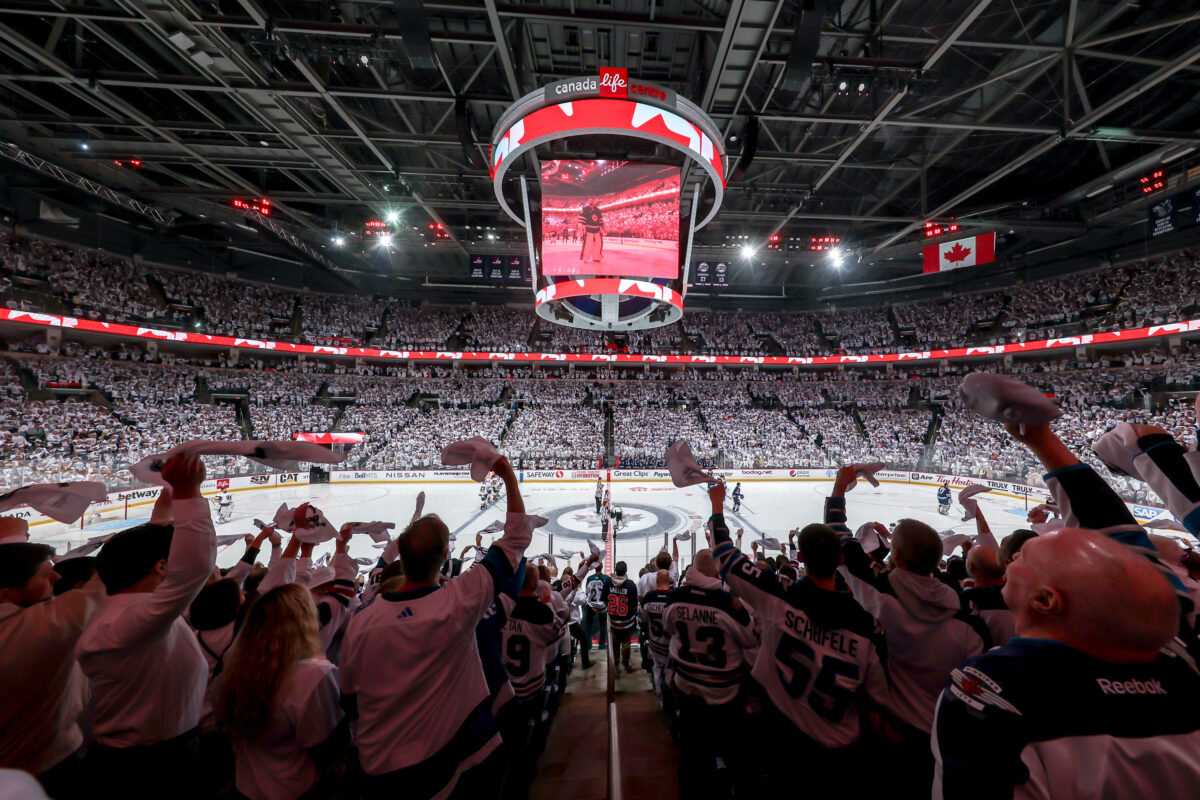
If you’re Jets’ general manager (GM) Kevin Cheveldayoff, the warning signs are there. This team was built to win. It won’t right now, the window has closed, which means the next chapter has begun. Now, is it a full tear-down and rebuild? Is it a revamp? We don’t know yet, and I don’t think that Cheveldayoff has complete control over that.
Where the Jets Currently Stand
Earlier this offseason, Pierre-Luc Dubois was dealt to the LA Kings for a great package that will add to the overall team depth. Specifically, Gabe Villardi has a chance to have a similar impact to Dubois as soon as this season, which would make the trade a clear win for the Jets.
Former captain Blake Wheeler had an onerous contract at an advanced age, one that was not moveable for any real assets, and he was bought out as a result. Paying for a player to leave and getting nothing back is a net loss and far from ideal. Cheveldayoff must get assets back for the remaining two major trade chips, those being Mark Scheifele and Connor Hellebuyck.
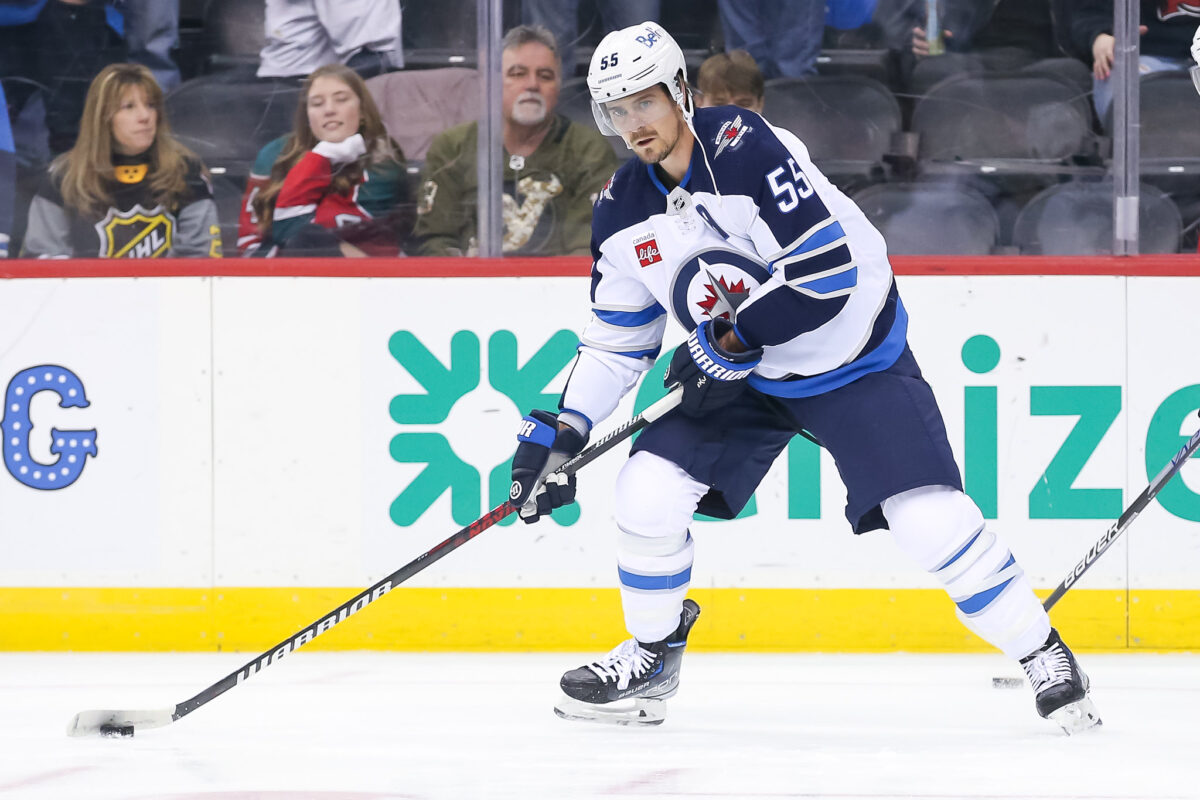
Both players are difficult to trade. Scheifele, while a legitimate first-line center (or a great second-line center) on a contending team, has two major negatives. The first is his attitude. There’s been enough smoke both out of the Jets’ dressing room and throughout the league about him that there are concerns on that front.
Second, Scheifele’s defensive play leaves much to be desired. His playing style – a disengaged one-dimensional center who does not win 50 percent of his faceoffs – simply does not work on winning teams. A team would have to either be in a position to not be worried about one or both of these factors or be willing to take a chance (and pay less as a result) in order to take him on. These factors lower his overall value, which will give Cheveldayoff pause when looking at the potential trade return for Scheifele.
With Hellebuyck, it’s simply a matter of bad timing. Bad timing that Hellebuyck turned 30 earlier this year, and the clock on those hips is now ticking league-wide. Bad timing that the Vegas Golden Knights just won the Stanley Cup using approximately 305 different goalies last season and won the Cup with a career minor leaguer who cost virtually nothing against the cap between the pipes. And bad timing that Hellebuyck’s contract is due, one that rumour has it he wants $9.5 million annually to sign his next one.
Related: 3 Jets Trade Partners for Connor Hellebuyck
Are these circumstances impossible? Of course not. Are they interesting? Hell yes. So, thanks to our besties over at CapFriendly who I just know are going to sponsor this article series any day now, let’s have some fun!
Hitting Your Mark
We’ll start with the Scheifele trade, as it’s very much time for a fresh start, and what better landing place for him than beside Johnny Gaudreau with Mike Babcock leading the way over in Columbus?

Multiple NHL teams need a top-six center, as always. If I’m Cheveldayoff, the target is Columbus, as they are, for some unknown reason, in win-now mode, have a great and logical top young player to offer, and enough young depth at the position to be able to trade top value. Kent Johnson is my target.
Johnson, turning 21 in October, was the fifth overall pick in the 2021 Entry Draft. According to Corey Pronman, he is extremely skilled, a great puck handler who can beat defencemen with the puck on his blade. He’s not the most athletic, and his speed isn’t anything to brag about, however, he is a dynamic, top-line forward (from ‘Ranking the best NHL players and prospects under 23: Connor Bedard tops the list, The Athletic, Aug. 28, 2023).
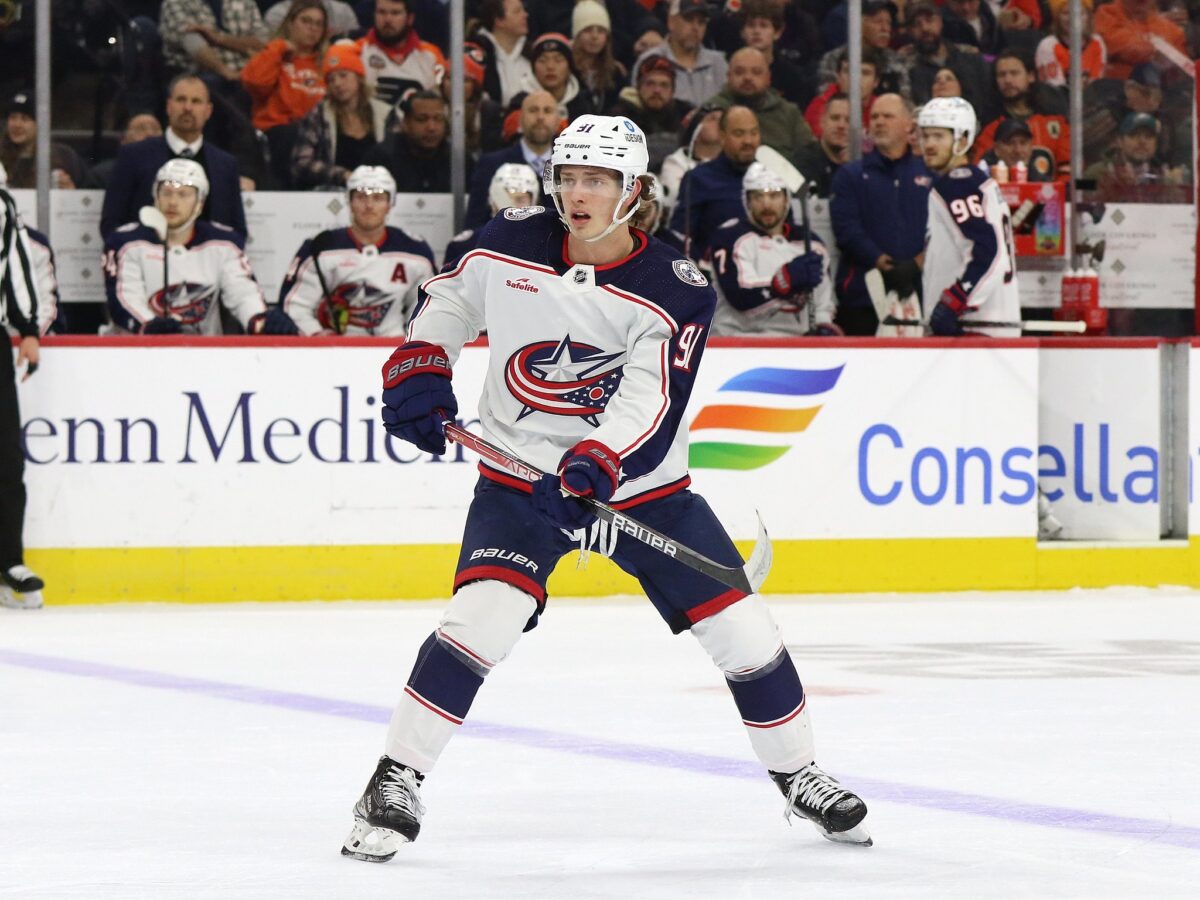
Johnson’s advanced stats are nothing impressive, though honestly, I’m not concerned with the analytics of a then-20-year-old rookie on a losing team. What’s far more interesting in this situation is what the pro scouts say in terms of engagement. The fact that he had 40 points in 79 games as a rookie on one of the worst teams in the league – at the very least – says a fair bit about his offensive engagement.
This brings us to one of the unique rules that Winnipeg must follow to be a consistent contender. One of the most important aspects of the Johnson side is that he is Canadian-born. He is used to Canadian winters, and while Winnipeg’s will be more intense than the BC ones that he grew up with, teams like the Jets have to specifically target young players who are used to the lifestyle in the area, in order to have the best chance of retaining them long-term. It’s a cardinal rule of success for their hockey operations department.
The Adam Boqvist for Logan Stanley section is very easy. Boqvist, the eighth overall pick in the 2018 Entry Draft, is a pure offensive defenceman who shoots right-handed, so there is value to work with here. He has not been able to stay healthy, playing between 35-56 pro games the past four seasons, so this is what you’d call a depressed asset.
Stanley simply needs to be traded. Regardless of his statement later this summer that he wants to be a Jet for his entire career, the fact is, once a person in a workplace or a player on a team says out loud that they want to leave their place of employment, they’re already one foot out the door. That kind of mental commitment means that Stanley has to go, and seeing as he hasn’t truly established himself as an NHL regular (114 games the past three seasons), Boqvist and what he offers (power play quarterback, top-four upside) is a very reasonable trade/upgrade.
How to Trade Your Dragon
One of the top goalies in the NHL today, Hellebuyck is a three-time Vezina Trophy nominee as the top goalie in the league, winning once in 2020. Still in his prime, he carries a $6,166,666 cap hit with no trade protection on the final year of his contract. Cheveldayoff will have to find a GM who believes in the value of a top goalie and the concept of having one who can win a playoff series for your team.
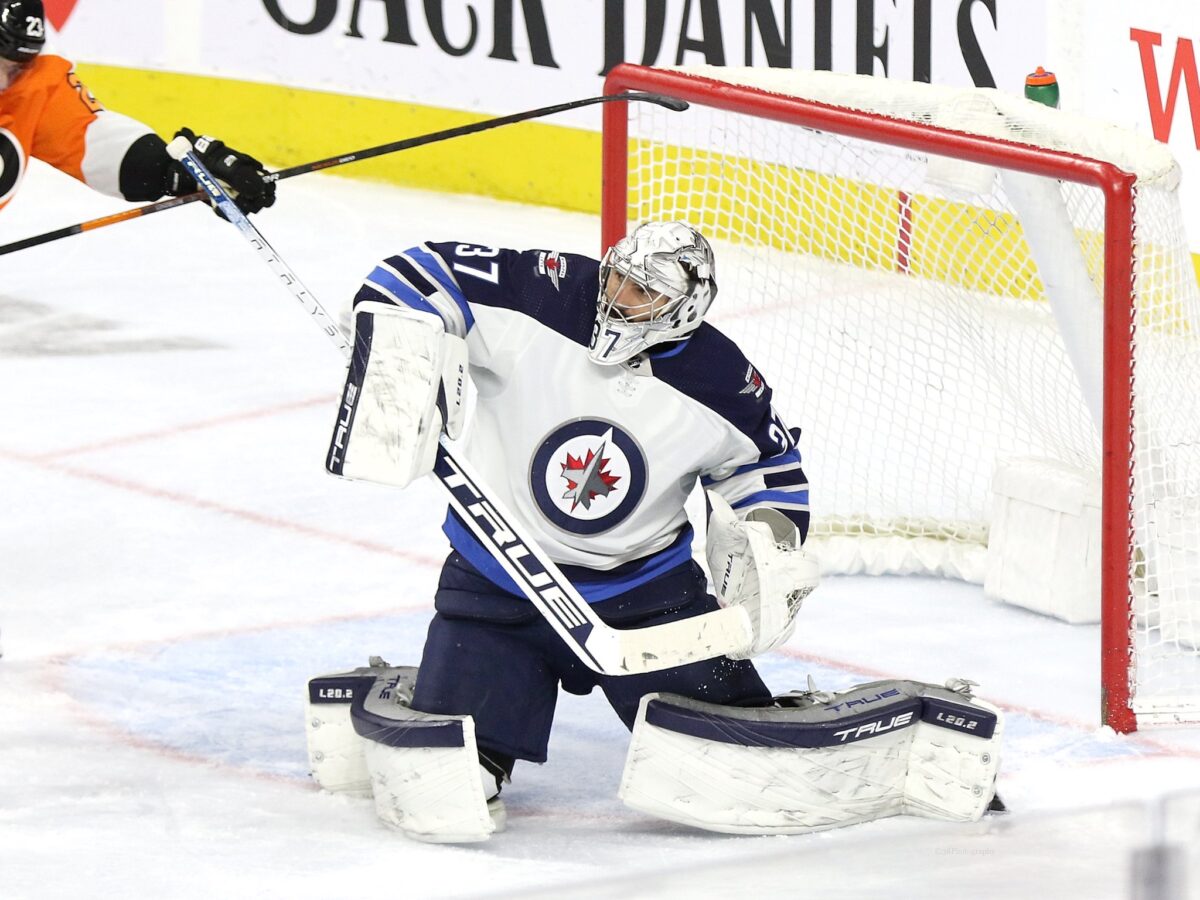
Logically speaking, you’re looking at the Buffalo Sabres, New Jersey Devils, Ottawa Senators, and Washington Capitals as ideal suitors. The Capitals ideally would like to keep their competitive window open while Alex Ovechkin chases the all-time goal-scoring record. The Sabres’ window is opening, and you want to be as competitive as possible for as long as possible. For the purposes of this exercise, we’re going to choose the Devils.
The Devils made it to the second round of the NHL playoffs last season, where goaltending issues were part of what did them in. A trade for Hellebuyck is easy enough to make with their existing roster and cap structure.
Most importantly from New Jersey’s perspective, their team is seemingly one goalie away from being a potential top Stanley Cup contender. Most importantly from Winnipeg’s perspective, the Devils have one of the top prospect pools of any team right now.
Let’s see what this trade could look like:

Now, if you’re Winnipeg, you’re definitely asking for defencemen Luke Hughes or Simon Nemec, or forward Dawson Mercer as the centerpiece of the deal. If you’re New Jersey, you have leverage – the fact that Winnipeg has to trade Hellebuyck and only a few teams have both the need and cap space – so you say no to trading any of those three. With that said, you still need to trade real assets. The Devils avoided dealing all of their top prospects and young players to San Jose in the Timo Meier trade last spring, however, they have to deal someone.
That someone is Alexander Holtz. He was a top prospect going into the 2020 Entry Draft and was chosen seventh overall by the Devils. He’s a pure goal scorer with above-average skills and shot whose play and career have been slowed by his, ahem, slow skating, and perimeter play (from ‘New Jersey Devils rank No. 4 in NHL Pipeline Rankings for 2023, The Athletic, Aug. 24, 2023). These issues are both fixable if Holtz has the right attitude (work ethic and willingness to adapt/evolve). If so, he is an easy top-six winger with first-line potential.
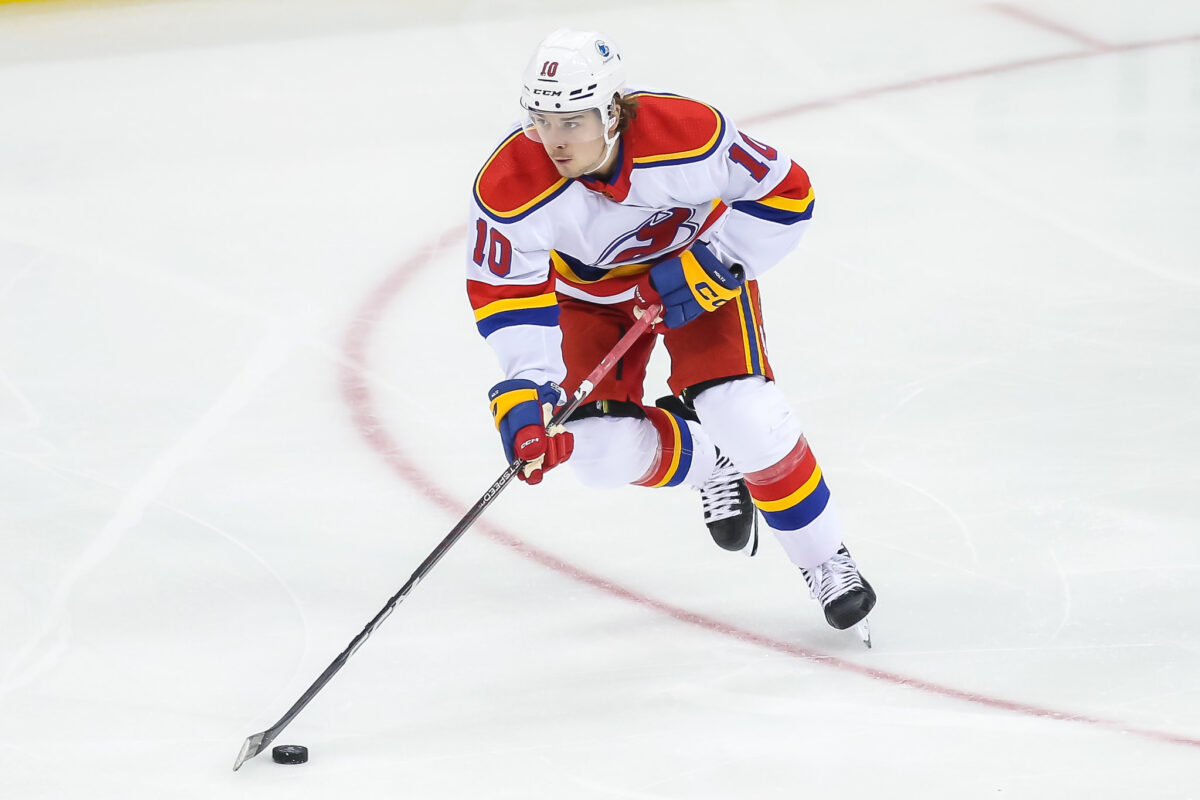
Beyond that, as with the Meier trade, if you’re not giving up a true top prospect, you’re giving up volume. To that end, Vitek Vanecek is a necessary part of the trade, as his cap hit allows the deal to happen. He can provide a good 1A or 1B goalie for a team trying to stay in the playoff race and would pair well with incumbent Laurent Brossoit.
Josh Filmon and Tyler Brennan are fliers to some extent. Filmon was a late-round draft pick in 2022 who is now a fast-rising prospect, having scored 47 goals in 64 games in the WHL in his post-draft year. The book on him is that he has top-nine potential, with NHL-average skills across the board. These types of players can end up being key second-line glue players on winning teams.
Brennan is a 6-foot-4, soon-to-be 20-year-old goalie on a bad Western Hockey League (WHL) team that has good intelligence and middle-of-the-road athleticism. He has a chance to play and is as good a goaltending prospect as any on the Devils. Teams have never been opposed to their young goalies facing adversity in terms of the number and quality of shots, the prevailing thought being this is far better for a goalie’s development than watching their team dominate puck possession in the opposite end of the ice.
The Next-Gen Jets
What can a roster without the Jets’ own Core Four look like?
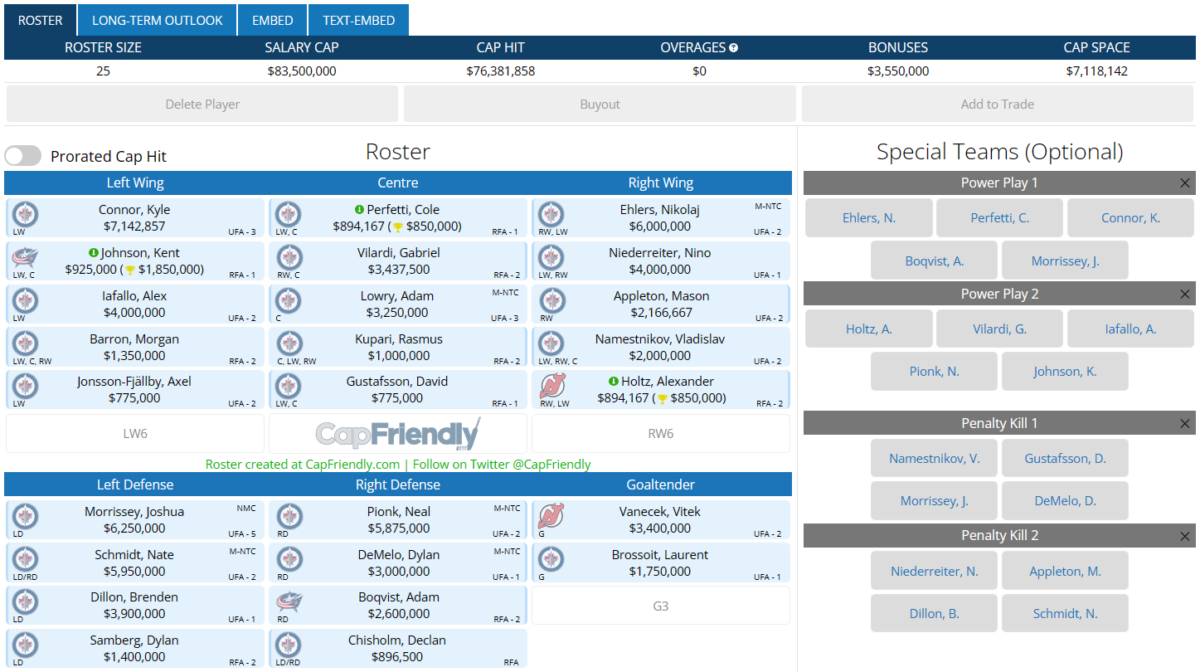
For training camp context, this is a 25-man roster, though NHL clubs can only hold 23 players. These trades leave the Jets with over $7.1 million in incredibly valuable cap space. This gives Cheveldayoff plenty of options throughout the season and leading to the trade deadline, be it to add for a playoff run or take on a bad contract with a high draft pick/quality prospect attached. Will it hurt to trade the leaders of this team? Of course. If done correctly though, they can ice a team that’s cleaned up its dressing room issues and is conceptually like the Seattle Kraken’s roster, with lots of depth from the first to the fourth line. Teams like this can cause havoc, and this Winnipeg team with its group of young forwards would open a new window to contention that would last many years, something that long-suffering Jets fans truly deserve.
